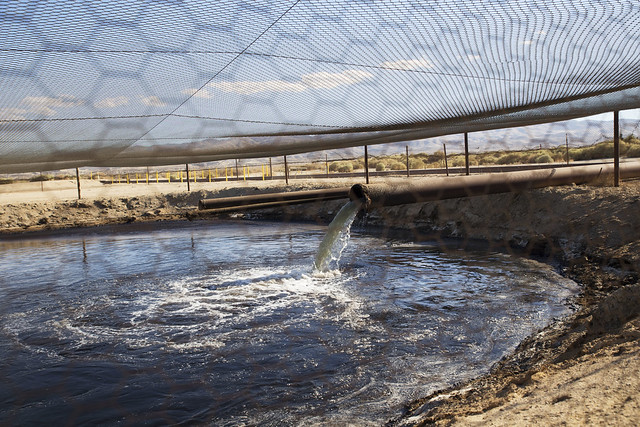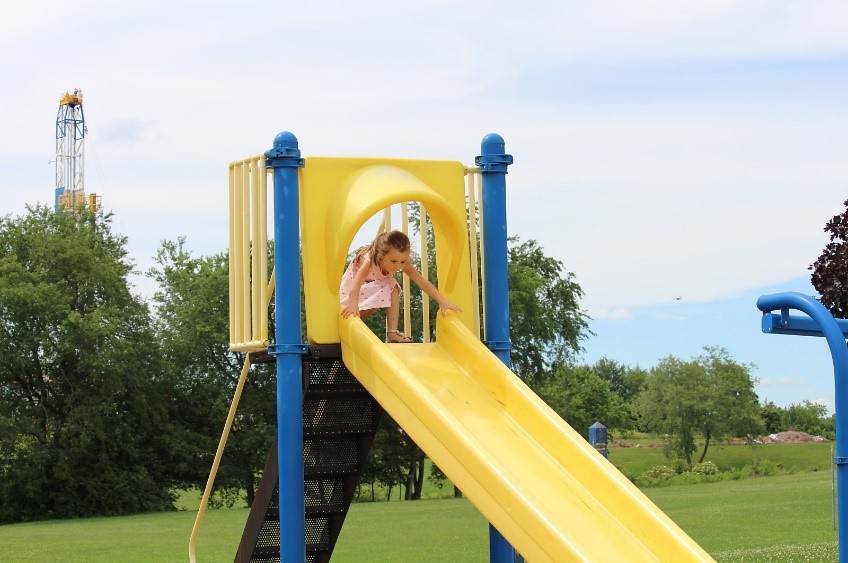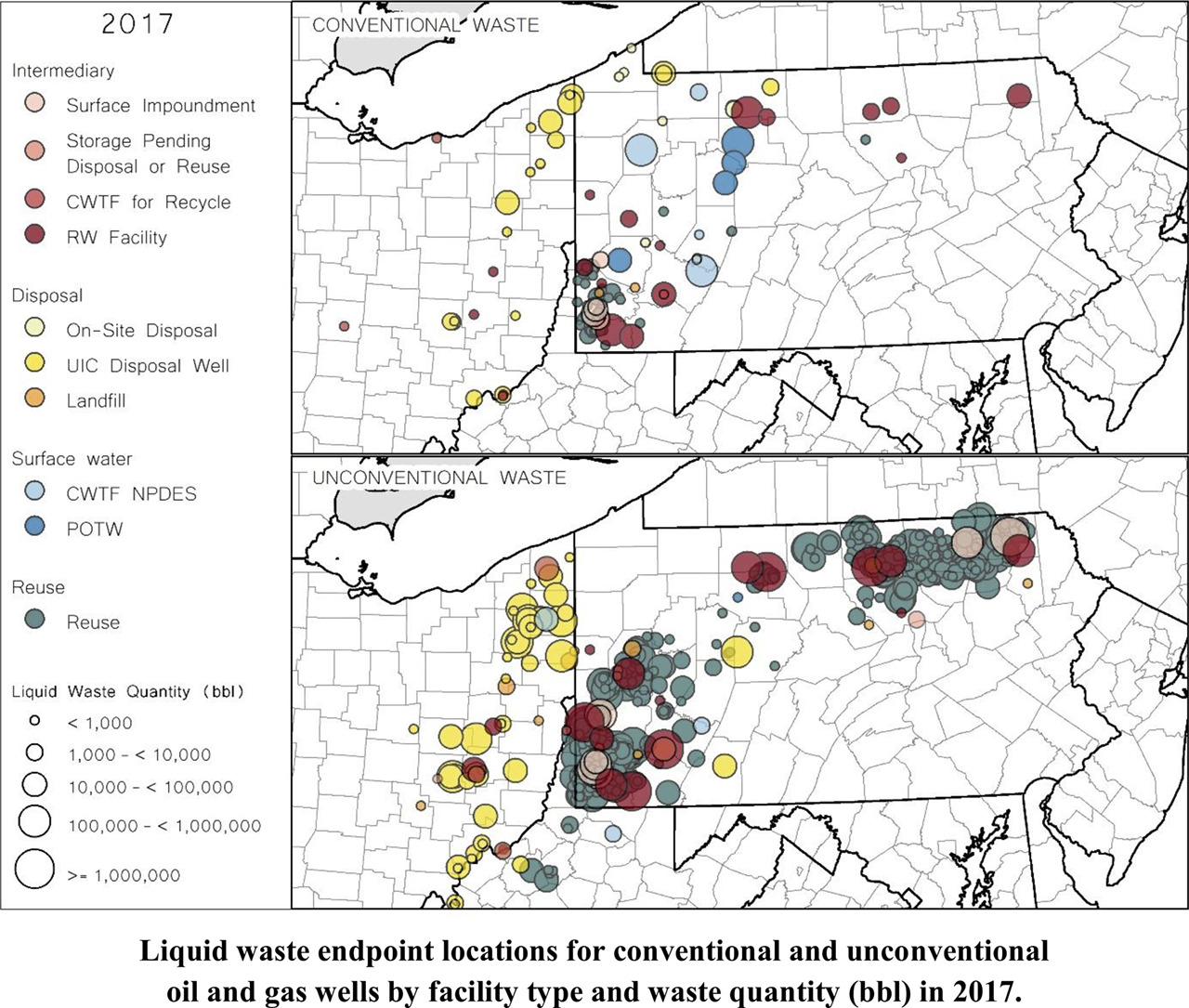On April 23, the U.S. Environmental Protection Agency (EPA) told two environmental groups that it had decided it was “not necessary” to update the federal standards handling toxic waste from oil and gas wells, including the waste produced by fracking.
State regulators have repeatedly proved unable to prevent the industry’s toxic waste from entering America’s drinking water supplies, including both private wells and the rivers from which public drinking water supplies are drawn, the Environmental Protection Agency concluded in a 2017 national study.
The corrosive salt-laden wastewater from fracked wells has been spread on roads as a de-icer. It’s been sprayed into the air in the hopes of evaporating the water — a practice that spreads its blend of volatile chemicals into the air instead. Oil industry wastewater has even been used to irrigate crops — in California, where state regulators haven’t set rules to keep dangerous chemicals like the carcinogen benzene out of irrigation water.
If equally contaminated waste came from other industries, it would usually be designated hazardous waste and subject to strict tracking and disposal rules designed to keep the public safe from industrial pollution. But in July 1988, after burying clear warnings from its own scientists about the hazards of oilfield waste, the EPA offered the oil and gas industry a broad exemption from hazardous waste handling laws.
The EPA‘s decision this week echoes that.
Watch EPA’s new featured #EarthWeek2019 video focused on this year’s theme – clean water. Today, over 92% of community water systems in the U.S. meet all health based standards, all of the time. pic.twitter.com/eWXUSXiXp2
— U.S. EPA (@EPA) April 25, 2019
“Rather than acting in the best interest of the public, EPA has continually shirked its duties and left our communities’ health, drinking water, and environment at risk,” said Adam Kron, senior attorney at the Environmental Integrity Project, one of the two groups that had asked the agency to consider its stance towards the waste. “EPA has known since 1988 that its rules for oil and gas wastes aren’t up to par.”
In the meantime, regulation has been left to the states — and the rules can vary widely.
Toxic Waste and Cancer in Pennsylvania
The decision comes as a new study, published in the peer-reviewed journal Science of the Total Environment, calls attention to the oil and gas waste produced in Pennsylvania for nearly that entire time.
The oil and gas industry has flooded Pennsylvania with over 380 million barrels of liquid waste from 1991 to 2017, that study found — enough to fill an area the size of a standard city block with a column of wastewater over 200 feet tall.
And that flood has been picking up pace. One out of every seven of those gallons was produced in 2017 alone.
Pennsylvania wastewater production, largely from “unconventional” gas wells, rose sharply in 2017. Credit: Science of the Total Environment, Hill et al. 2019
A full 80 percent of the waste produced by the oil and gas industry in Pennsylvania stayed in Pennsylvania — or at least that’s as far as the Commonwealth’s reporting system tracked it.
“Pennsylvania also has the third highest cancer incidence rate of all U.S. states,” Environmental Health News reported, citing data from the Centers for Disease Control and Prevention. “Approximately half of all Pennsylvanians will be diagnosed with cancer at some point in their lifetime, and about one in five Pennsylvanians will die of cancer.”
Fifty-five known chemicals that fracked oil and gas operations release into the air and the water can cause cancer, a Yale Public Health analysis found last year. Oil and gas workers are routinely exposed to dangerous levels of cancer-causing chemicals like benzene, a 2014 National Institute for Occupational Safety and Health found.
Fracking has also been linked to asthma, low birth weights, and other health problems. “Our examination of the peer-reviewed medical and public health literature uncovered no evidence that fracking can be practiced in a manner that does not threaten human health,” a 266-page report by Concerned Health Professionals of New York and Physicians for Social Responsibility found in 2018.
Pennsylvania elementary school playground near a well pad in Butler County. Credit: Moms Clean Air Force, CC BY–NC–SA 2.0
Toxic and Radioactive
While many researchers have focused on just the waste from fracked shale wells (considered “unconventional” oil and gas), the new study looks at the wastewater from conventional oil and gas wells in Pennsylvania as well. The waste from both Marcellus shale wells and “conventional” wells can carry a wide range of pollutants and carcinogens.
“Radium is brought up with oil and gas wastewater for both conventional and unconventional oil and gas production,” explained Lee Ann L. Hill, who is lead author of the report and with the research and policy institute PSE (Physicians, Scientists, and Engineers) Healthy Energy.
Radioactive materials — for example, the radium isotopes associated with drilling — have been found in the sediments downstream from treatment plants, which are often ill-equipped to handle the blend of corrosive salts, trade-secret chemicals, and radioactive elements produced by the state’s oil and gas industry.
“7.6 percent of the wastewater over the whole study period, 1991 to 2017, was discharged to surface water,” Hill, an Environmental Health Program Associate, added. “That ended up being 30 million barrels.”
Tracking Toxic Waste — to its First Stop
In the absence of federal hazardous waste rules, which require stop-by-stop tracking of dangerous toxic waste, states are left to craft their own requirements for the drilling industry — and left to enforce them.
Pennsylvania is one of the only places that requires drillers to file details about their solid and liquid waste to a centralized public reporting system — offering independent researchers a chance to understand how much waste drillers produced and where it all went — or at least where drillers told the state about their waste.
Reported disposal locations for oil and gas drilling wastewater from Pennsylvania in 2017. Credit: Science of the Total Environment, Hill et al. 2019
But the data is still incomplete, and not just because it’s self-reported.
The Commonwealth requires drillers to report how much waste they produce and where it is shipped for disposal — but drillers are allowed to list temporary holding facilities — like wastewater “impoundments” or pits — in their reporting, without filing an update to show where the waste ultimately went.
“In addition, a third of the liquid waste across all years in the inventory lack a reported final destination,” the study concludes.
It’s a problem that appears to be getting worse in recent years. In 2017, 41 percent of the wastewater that drillers told Pennsylvania they produced wasn’t tracked all the way through to disposal, researchers said.
Multiple explosions have rocked the fracking industry this summer. One of which was sparked by toxic wastewater, not the oil itself. This is a big issue since fracking wastewater has grown 1,440% in the past five years.
Read the full story: https://t.co/CfzV8Kdf2y #environment pic.twitter.com/4cokP52ccQ
— DeSmogBlog (@DeSmogBlog) August 23, 2018
And while drillers reported sites in Pennsylvania as the first stop for 80 percent of the waste, a significant amount has found its way into neighboring states like New York and Ohio, the study found.
Over 650,000 tons of solid waste from Pennsylvania’s drilling industry was hauled into New York state from 2010 to 2017, the researchers found, including about 20,000 tons in 2017.
Roughly 31 million barrels of liquid waste was shipped directly out-of-state during that time, the report found, with Ohio taking 29.3 million barrels and West Virginia receiving 1.44 million barrels of wastewater from Pennsylvania.
“It really brings to light that there is definitely inter-state involvement when you talk about oil and gas activities,” said Hill. “It’s not just isolated to one state — neighboring states are tied together when dealing with waste management.”
But at least for the moment, the Trump administration’s Environmental Protection Agency has decided not to step in, at least not where hazardous waste laws are concerned.
Representatives from civic groups who had asked the EPA to regulate responded in a statement.
“Disposal of waste from oil and gas operations is one of the biggest challenges the industry faces,” Barbara Jarmoska, board member of the Responsible Drilling Alliance, said in a statement responding to the announcement. “Failure to update rules for the disposal and handling of dangerous oil and gas wastes is an egregious dereliction of duty and an intolerable threat to the health and safety of American citizens.”
Main image: Fracking fluid and other drilling wastes are dumped into an unlined pit located right up against the Petroleum Highway in Kern County, California. Credit: Sarah Craig/Faces of Fracking, CC BY–NC–ND 2.0Subscribe to our newsletter
Stay up to date with DeSmog news and alerts









